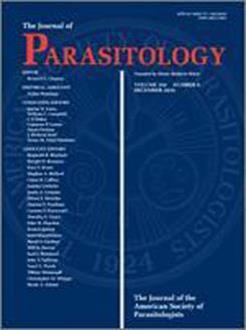There are multiple Henneguya spp. (Myxozoa: Myxobolidae) endemic to North American catfish aquaculture that affect the gills of channel catfish and their hybrids. These parasites are morphologically similar, and confusion exists regarding the predilection sites and pathologic changes associated with different species. In the spring of 2018, channel (Ictalurus punctatus) female × blue (Ictalurus furcatus) male hybrid catfish from 2 separate commercial operations in northwest Mississippi were submitted for diagnostic assessment in response to observed morbidity and reduced feeding activity. Fish presented with unusually heavy infections of Henneguya spp. plasmodia in the gills. The majority of gill filaments contained widespread, pinpoint, raised, white nodules corresponding microscopically to myxospore-filled plasmodia that obliterated interlamellar spaces. The bipolar myxospores were consistent with Henneguya spp. described from North American ictalurids, possessing slender fusiform spore bodies and elongate bifurcate caudal processes. Associated microscopic lesions included lamellar fusion, epithelial hyperplasia, infrequent, localized, granulomatous branchitis, and rare cartilage lysis, suggesting impaired gill function. Mature plasmodia were excised by laser capture microdissection from ethanol-fixed, hematoxylin and eosin–stained histologic sections for molecular analysis. Fragments (700 bp) of a highly variable region of the 18S rRNA gene, diagnostic for the Myxobolidae, were 100% similar at the nucleotide level to Henneguya exilis. Although mortality was negligible, fish in the affected ponds exhibited signs of respiratory distress similar to proliferative gill disease (PGD) caused by Henneguya ictaluri in channel and hybrid catfish. However, gross and microscopic lesions differed markedly from PGD, known colloquially as “hamburger gill disease.” While H. exilis has been reported from channel catfish, it is not typically associated with morbidity and mortality and has not previously been reported from channel × blue catfish hybrids. This work characterizes lesions and confirms the etiology of gill disease induced by the myxozoan H. exilis. In addition to PGD and other non-parasitic conditions, massive interlamellar H. exilis infection should be a differential consideration in pond-raised channel and hybrid catfish experiencing signs of respiratory distress.
How to translate text using browser tools
2 October 2019
Pathologic Changes Associated with Respiratory Compromise and Morbidity Due to Massive Interlamellar Henneguya exilis Infection in Channel × Blue Hybrid Catfish
Justin M. Stilwell,
Alvin C. Camus,
John H. Leary,
Lester H. Khoo,
Matt J. Griffin
ACCESS THE FULL ARTICLE

Journal of Parasitology
Vol. 105 • No. 5
September 2019
Vol. 105 • No. 5
September 2019
catfish
Henneguya exilis
laser capture microdissection
Proliferative Gill Disease




